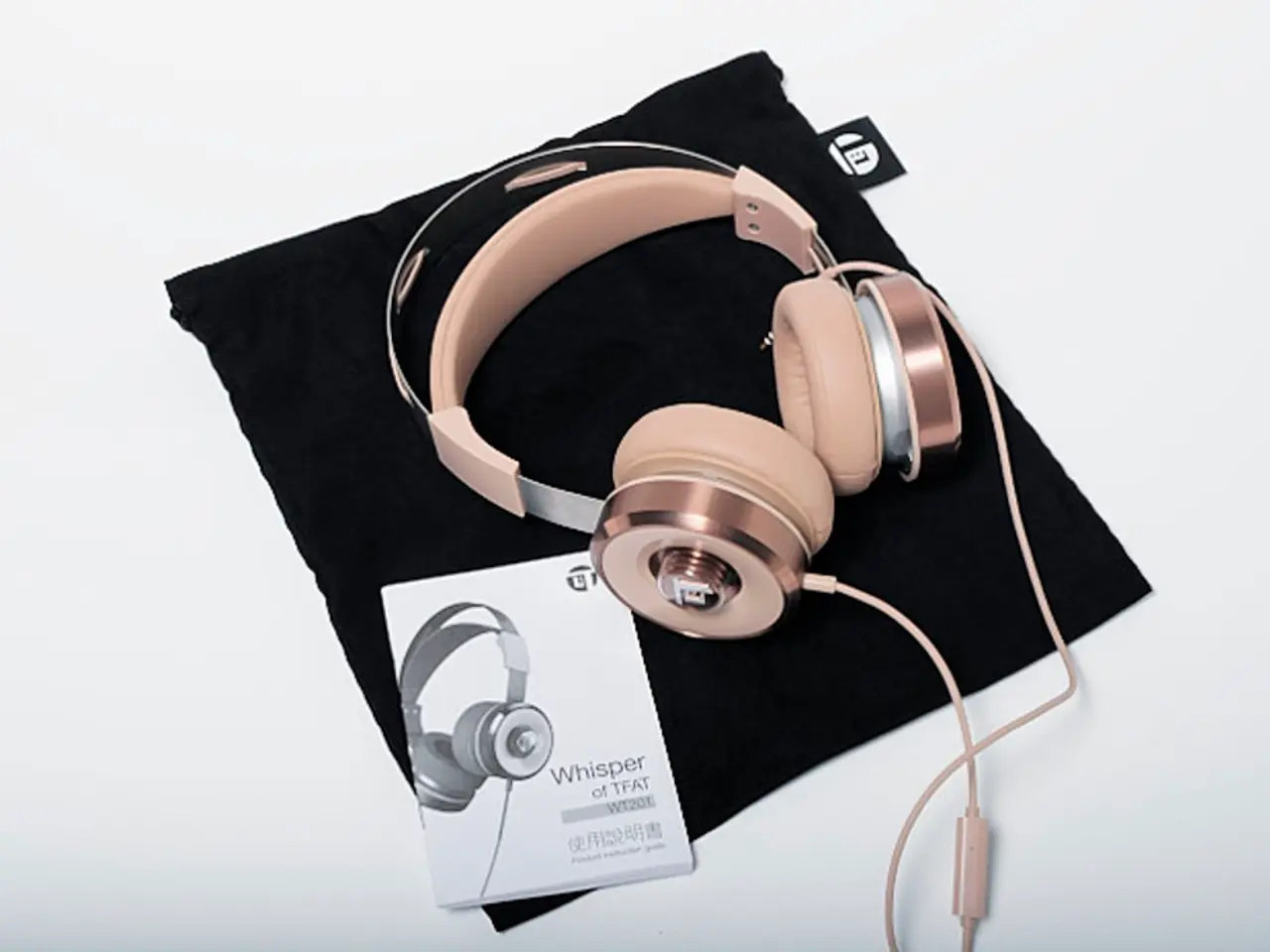Google Pixel Lacking Traditional Headphone Port?
In the ever-evolving world of technology, the Google Pixel series has taken a significant leap by adopting a trend that is sweeping the market: wireless audio. Recent models, such as the Pixel 4a 5G, 3a XL, and future releases like the Pixel 10 and 10 Pro, have abandoned the traditional 3.5mm headphone jack in favour of USB-C ports[1][3][4].
This change reflects a broader industry move towards wireless audio and streamlined device designs. By removing the headphone jack, Google is able to create slimmer devices with better water resistance, while making room for advanced components like larger batteries and improved cameras[1].
While some users may find this change challenging, Google has taken steps to accommodate those who prefer wired audio options. The company provides USB-C to 3.5mm adapters, allowing users to connect their traditional headphones to the Pixel[1]. Additionally, the market is seeing a surge in the adoption of USB-C headphones, providing an alternative for those looking to upgrade[5].
Smart audio devices, such as smart speakers and virtual assistants, are also changing the way we consume audio. These devices are reducing the reliance on traditional earbuds or headphones, offering a hands-free and voice-activated audio experience[6].
The Google Pixel series, which debuted in 2016 and established itself as a leader in the smartphone ecosystem, has continued this trend. The Pixel 5a, released in 2021, is the only model in the series between 2016 and 2022 to have a headphone jack[2]. Models such as the Pixel 3, 3 XL, 4, 4 XL, 6, 6 Pro, 7, and 7 Pro, all released between 2018 and 2022, do not have a headphone jack[7].
The shift towards wireless audio has sparked controversy among users who are apprehensive about the shift away from traditional audio connectivity. Audiophiles argue that wired connections generally offer a more stable and consistent audio experience compared to wireless options. However, advances in Bluetooth technology have significantly improved wireless audio quality[8]. Latest versions of Bluetooth technology, such as Bluetooth 5.0, have improved audio streaming capabilities, providing a wireless alternative for audio playback on the Google Pixel[4].
In conclusion, the Google Pixel series has embraced the trend of wireless audio, with recent models no longer including a headphone jack. Google provides adapters for wired headphones if needed, and the removal of the jack facilitates slimmer designs, better water resistance, and component improvements. As the market continues to favour wireless solutions, it is unlikely that future Google Pixel models will include a headphone jack.
References: [1] Google Support. (2020). Using headphones with your Pixel phone. Retrieved from https://support.google.com/pixelphone/answer/7502035?hl=en [2] Google. (2021). Pixel 5a. Retrieved from https://store.google.com/product/pixel_5a_5g [3] Google. (2021). Pixel 6 and Pixel 6 Pro. Retrieved from https://store.google.com/product/pixel_6_and_6_pro [4] Google. (2022). Pixel 7 and Pixel 7 Pro. Retrieved from https://store.google.com/product/pixel_7_and_7_pro [5] The Verge. (2021). The best USB-C headphones you can buy today. Retrieved from https://www.theverge.com/guides/the-best-usb-c-headphones [6] The New York Times. (2019). How Smart Speakers Are Changing the Way We Listen to Music. Retrieved from https://www.nytimes.com/2019/01/21/technology/smart-speakers-music-streaming.html [7] Android Central. (2022). Every Google Pixel phone ever made, ranked. Retrieved from https://www.androidcentral.com/every-google-pixel-phone-ever-made-ranked [8] The Verge. (2019). How Bluetooth 5.0 makes your wireless headphones better. Retrieved from https://www.theverge.com/circuitbreaker/2019/10/24/20928394/bluetooth-5-0-headphones-audio-quality-features-improvements
The Google Pixel series, in its pursuit of wireless audio, has phased out the traditional headphone jack, opting for USB-C ports instead, as seen in the Pixel 4a 5G, 3a XL, and upcoming models like the Pixel 10 and 10 Pro [1][3][4]. To cater to users who prefer wired audio, Google provides USB-C to 3.5mm adapters [1]. On the other hand, the market is witnessing a rise in USB-C earbuds, offering an alternative for Pixel users [5].




